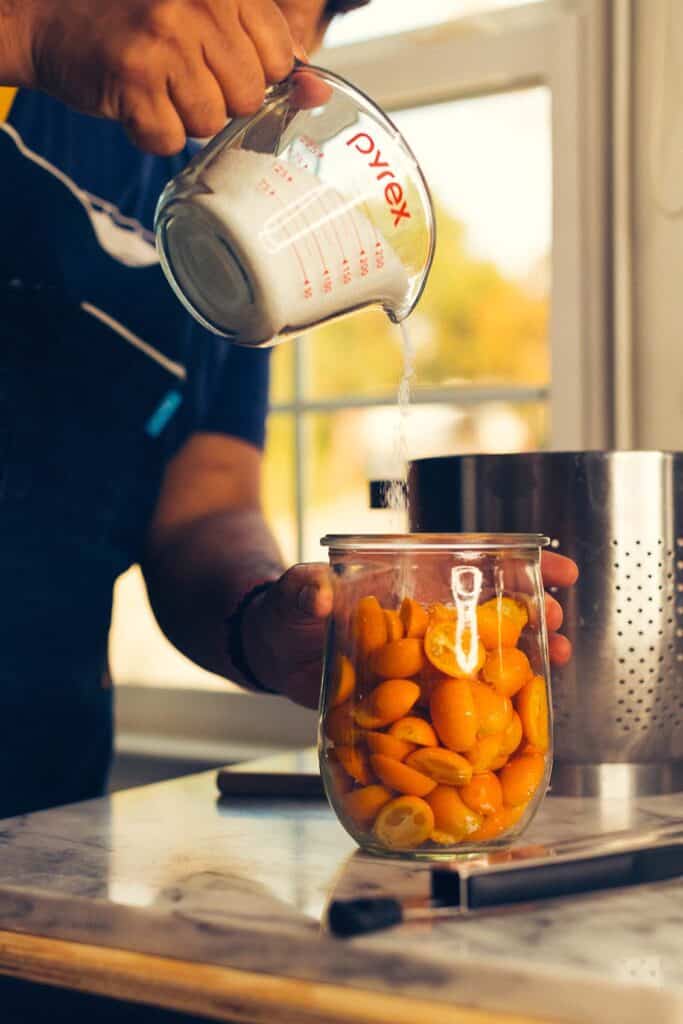
It started with a simple comment. I had just finished making a batch of preserved lemons and posted a few photos online when a reader, David Kellet, mentioned that he also preserves kumquats in salt. I’d candied kumquats in sugar syrup before, but I’d never thought to preserve them this way. His idea was brilliant.
Outside my kitchen window grows a small dwarf Nagami kumquat tree, heavy with bright orange fruit. Within an hour, I had gathered a bowlful, sliced them open, and packed them into a jar with salt. What began as curiosity turned into one of my favorite flavor experiments of the season.
The Science Behind Preserved Kumquats
Preserving kumquats follows the same chemistry as preserved lemons — osmosis and fermentation guided by salt. When you coat the fruit with salt and pack it tightly in a jar, water is drawn out of the fruit cells, creating a natural brine. Over the next few weeks, beneficial microbes thrive in that salty environment, gently fermenting the fruit and deepening its aroma.
As the rind softens and the pulp grows translucent, the flavors evolve—the sharp, bright acidity mellows, replaced by a savory-sour complexity. Salt amplifies the citrus oils in the peel, so the final result tastes both more fragrant and more balanced than a fresh kumquat.
How to Use Them
Use preserved kumquats anywhere you’d reach for preserved lemons — they add a deep citrus note that balances sweetness, salt, and acidity all at once.
- Finely chop and stir into yogurt or labneh.
- Blend a small piece into salad dressings or vinaigrettes.
- Mince into salsas or chutneys for a citrusy punch.
- Stir into stews, tagines, or braises for layered brightness.
- Pair with roasted meats, grilled fish, or rice dishes.
The rind is the star here — soft, fragrant, and full of flavor. The pulp can be too salty on its own but adds depth when mixed into sauces or pureed with olive oil.
Why They’re Worth Making
Preserved kumquats are proof that preservation is transformation. In just a few weeks, salt turns raw brightness into something complex, savory, and enduring.
It’s also a wonderful way to use seasonal fruit: a small batch of kumquats becomes an ingredient you can reach for all year. A spoonful in a sauce or salad instantly wakes up a dish, bringing that same sparkle you get from sunlight catching citrus oil on your fingers.
In The Flavor Equation
My book The Flavor Equation explores how salt, acid, and time interact to build flavor — including two preserved lemon recipes, one quick and one traditional. Preserved kumquats follow those same principles, showing how a simple act of fermentation creates depth and emotion in cooking.
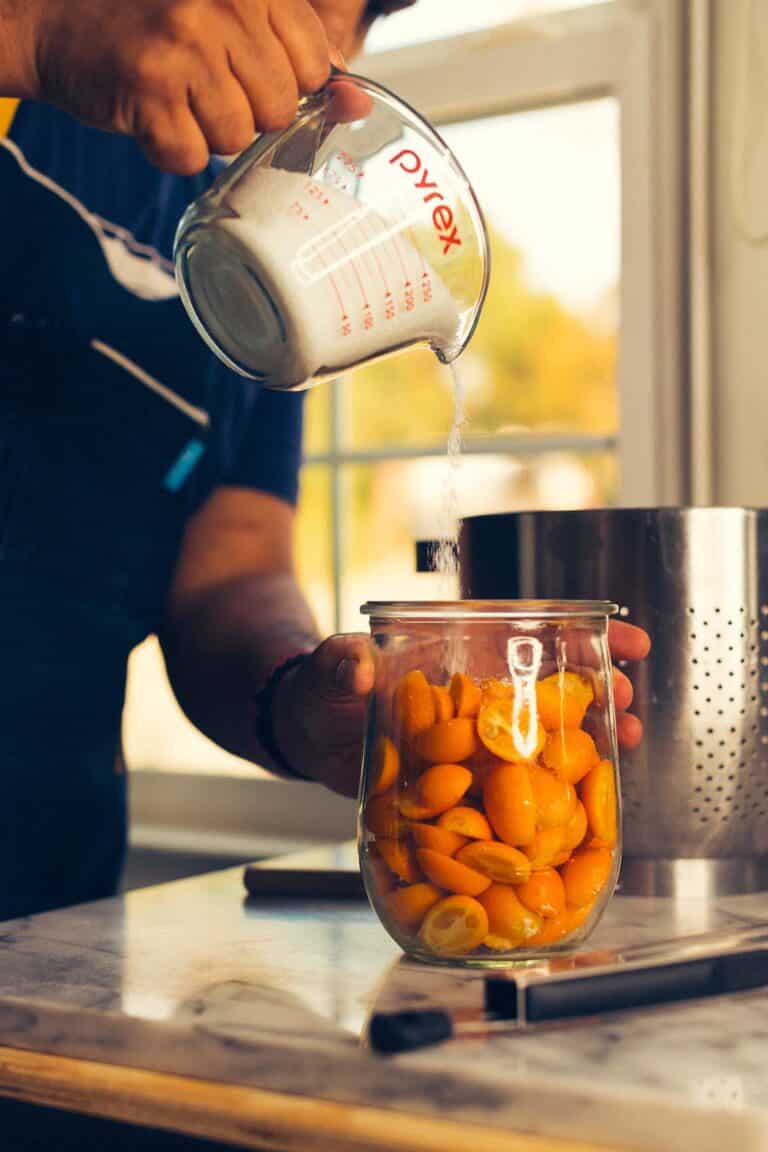
Preserved Kumquats
5 Stars 4 Stars 3 Stars 2 Stars 1 Star
No reviews
Use preserved kumquats exactly like preserved lemons. Rinse the kumquats with running water before use, scoop out and discard the pulp. Slice or dice the peels and use them in cocktails, desserts like cakes, ice cream, and in savory dishes to make salad vinaigrettes, add more flavor to mayonnaise or aioli, roasted meat, seafood, and vegetables.
- Yield: 1 lb [455 g]
Instructions
- Rinse the kumquats under warm running water to dislodge any dirt or debris. Take a clean, sterile jar and place it on the counter. Cut the kumquats in half lengthwise and add them to the jar.
- Add half cup of salt. Press and crush the kumquats down to release as much juice as possible. The kumquats should be completely submerged in the salt and their juices, so press well. The heavier the spoon/ladle, the better. Cover the top with the remaining half cup of salt. If you need more salt, add a few tablespoons (it varies by the size of the jar). Seal the jar tightly with a lid, and leave it in a cool, dark spot for 3 days. Shake the jar once every day to recirculate the juices inside. Eventually, the salt will dissolve, drawing out even more juice from the fruit halves via osmosis and forming a thick salty syrup.
- After the 3-day mark, store the jar in the refrigerator for at least 6 months. You don’t need to shake the jar anymore, though I like to occasionally for the arm exercise.
Notes
-
Use a few small jars or one large jar. Make sure they’re clean and rinsed with hot water. I sterilize my cleaned jars in boiling water before I use them. Read this quick guide on how to sterilize a jar.
-
There’s no canning involved in this recipe; the process starts at room temperature and then moves to the refrigerator. The salt and acid prevent the growth of harmful bacteria, but it is still an excellent idea to make sure you use clean and sterile jars.
- Author: Nik Sharma
Roasted Carrots with Preserved Lemon Yogurt
Some vegetables are meant for the oven, they beg to be roasted, and carrots fall into that family of what I call “preferred roasters.” Their flesh becomes tender and sweeter, and their long tapering tips turn slightly crisp. It’s fair to say that I eat roasted carrots often (is there such a thing as too often ?), and I’m going to go a step further and say I think this will be your new favorite way to eat carrots. Warm roasted carrots with a crispy blanket of golden brown crisp chia seeds and panko sitting on a yogurt mattress flavored with garlic and preserved lemons. Now, I must give you a fair warning, be quick once it’s all put together. The carrots will cool off, and the panko will turn soft when it touches the yogurt. You want all that crispy texture and hot and cold temperatures to play in your mouth.
5/5 from 1 ratings
Preserved Lemon, Za’atar Pasta
My pantry is like a treasure chest, a collection of ingredients waiting to be used. This Preserved Lemon Za’atar Pasta is one of the best ways to use up pantry ingredients, and it is inspired by the flavors of the Mediterranean and the Middle East. The pasta is fragrant with the aroma of tangy fresh and preserved lemons, za’atar, and plenty of garlic. Soft creamy ricotta and crunchy toasted breadcrumbs compliment the pasta. This is an easy dinner to make on a busy day, and one everyone loves. This is also an excuse to use the lemons growing in my garden.
5/5 from 1 ratings
4
South Indian Lemon Peanut Rice (Chitranna)
South Indian Lemon Peanut Rice, also known as Chitranna, is a beloved dish from the southern Indian state of Karnataka. It is one of those comfort foods that turns simple ingredients into something memorable. The dish gets its golden hue from turmeric, its brightness from fresh lemon juice, and its unmistakable fragrance from curry leaves and coconut oil. I first learned to
0

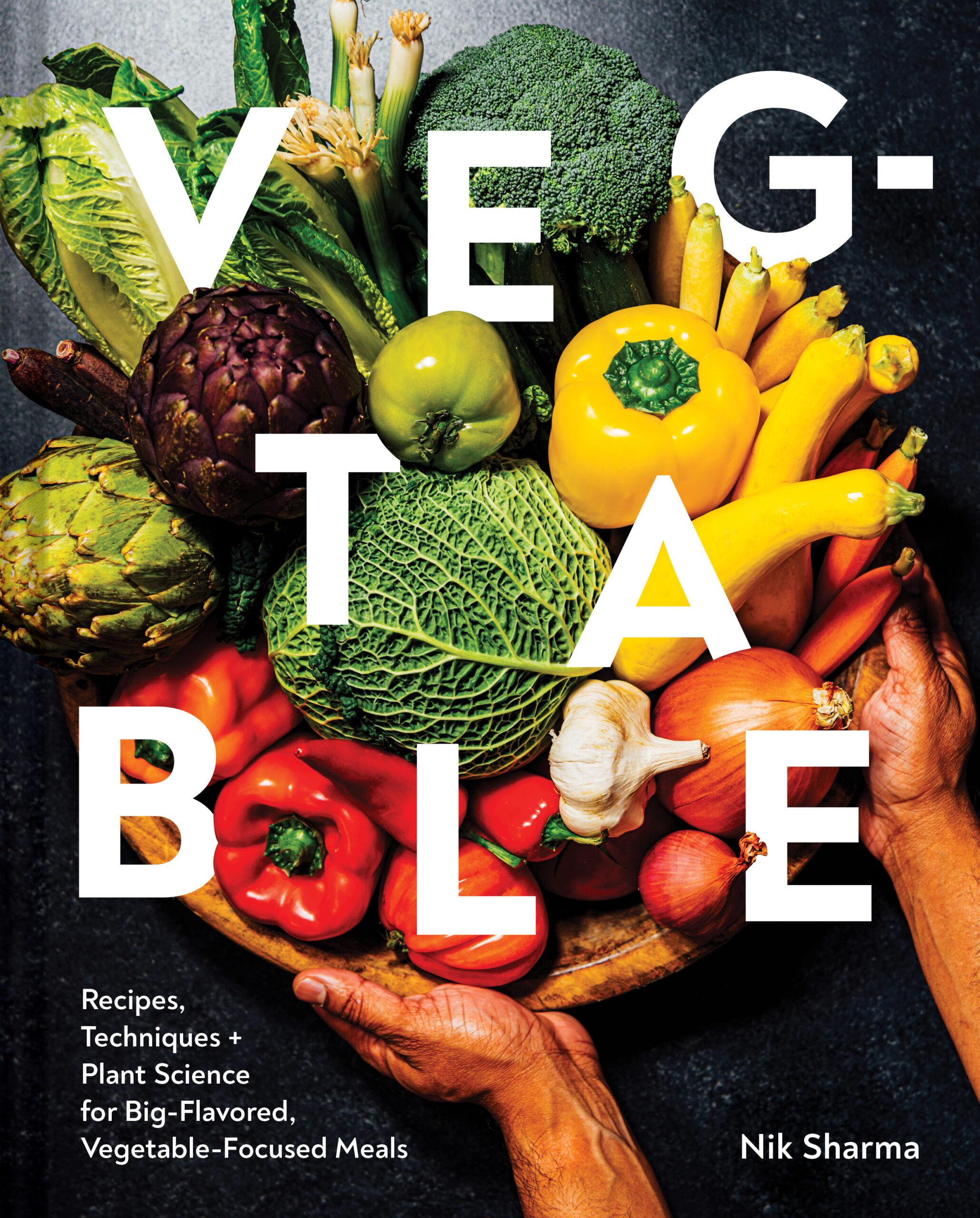
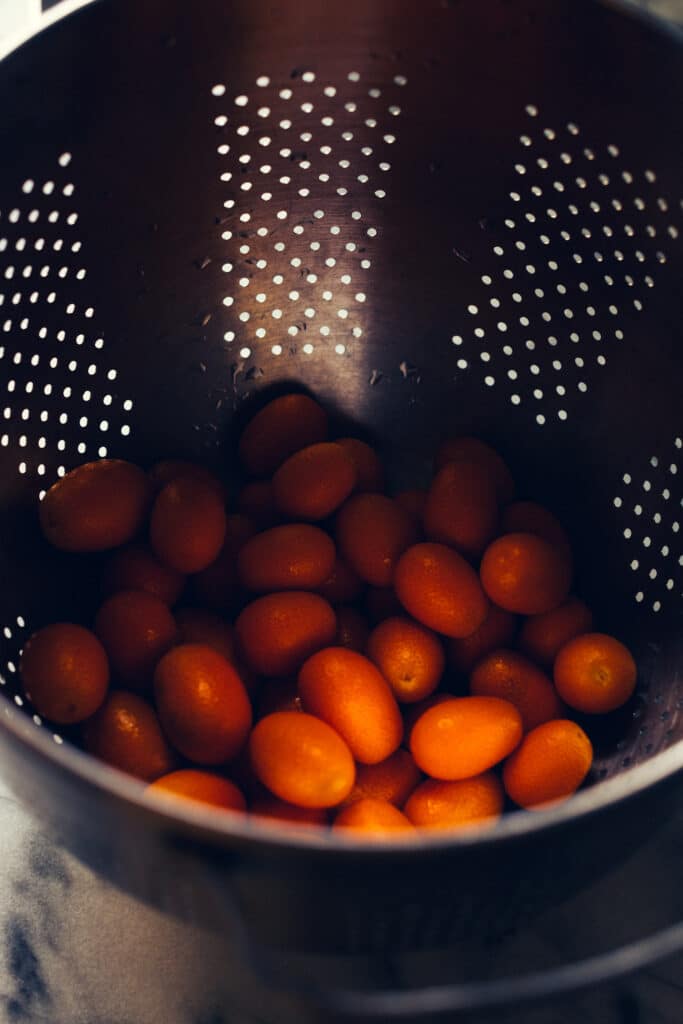
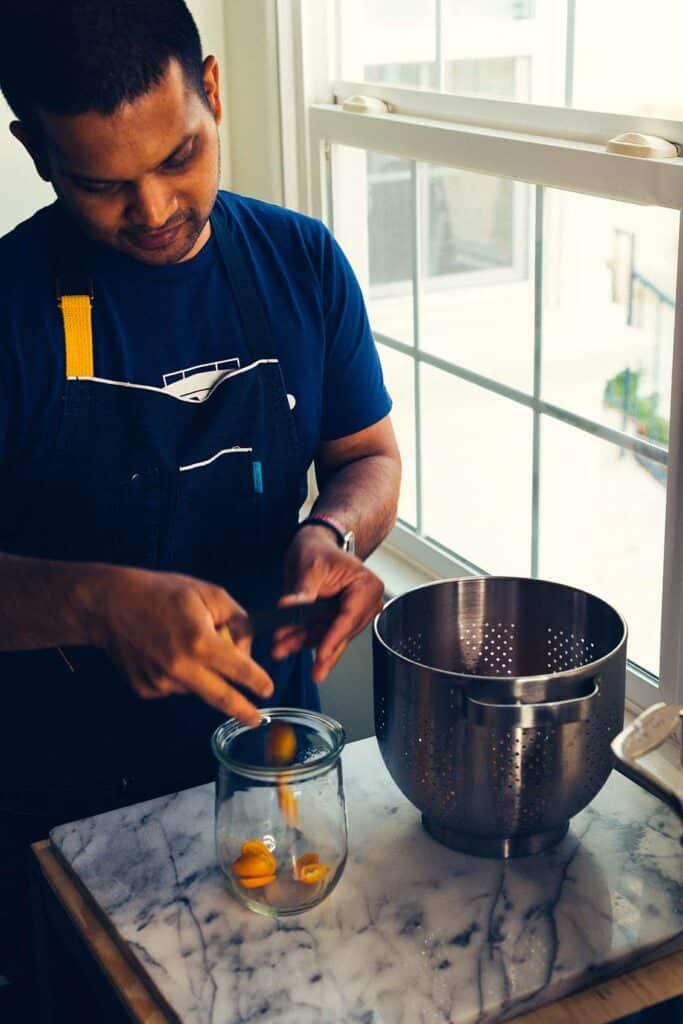
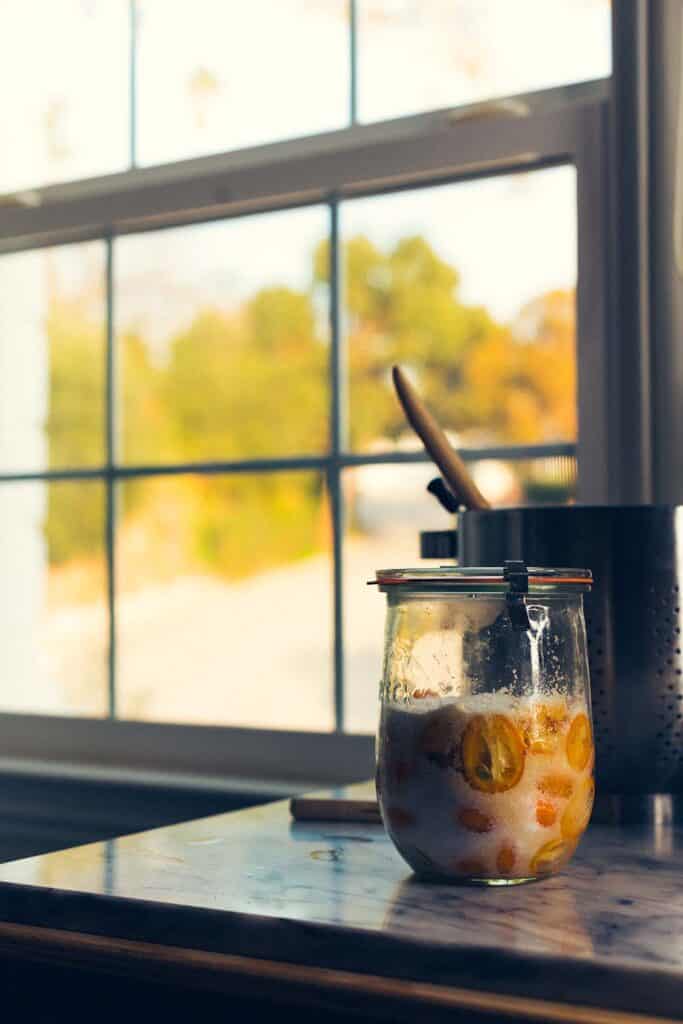
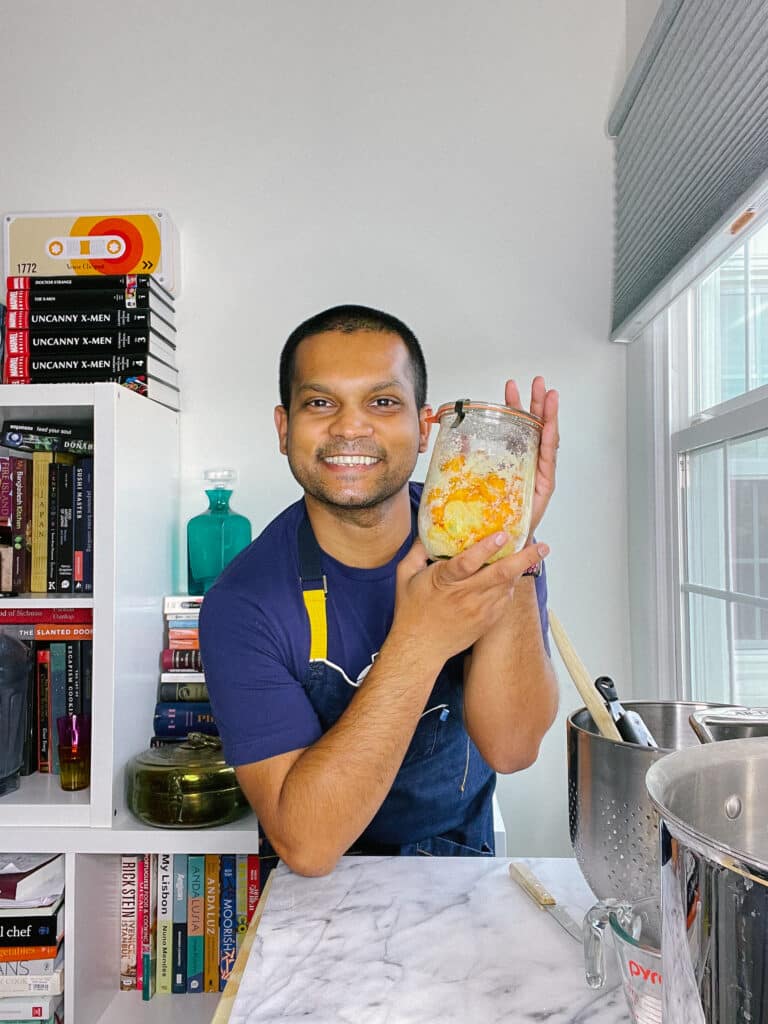

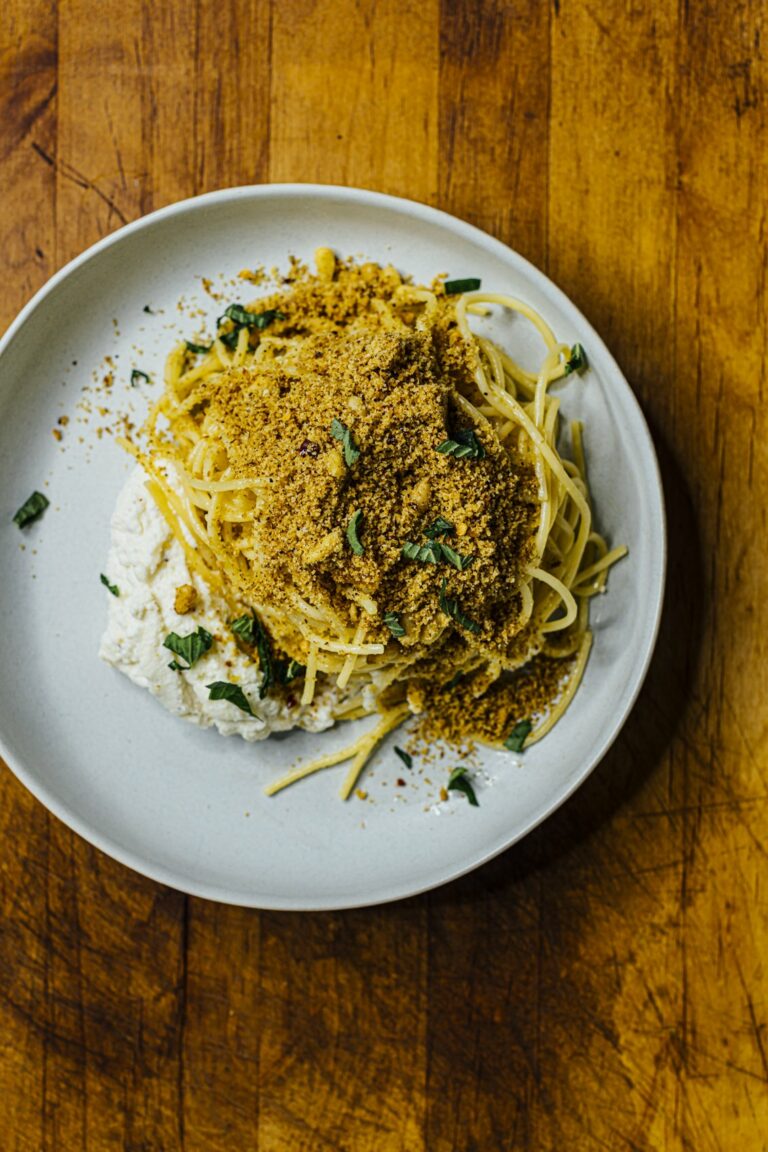
2